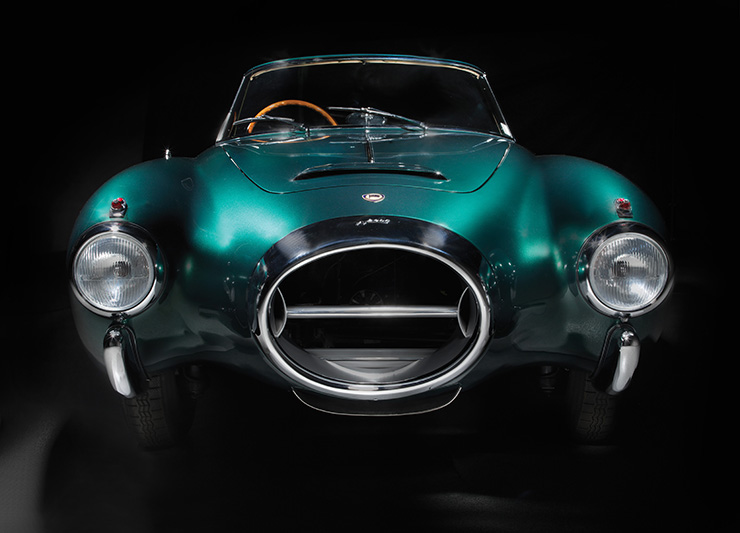Post–World War II Italy witnessed a remarkable industrial and cultural rebirth known as the Italian economic miracle (il miracolo economico). This encompassed world-acclaimed fashion, film, graphic design, and furniture design; advanced aeronautics; sleek watercraft; and the subject of this catalogue and exhibition, spectacular automobiles and motorcycles.
Badly damaged during the final years of the conflict, Italy’s manufacturing and design capabilities had reached a nadir by 1945. But the country’s indomitable creative spirit—the inspiration for its art and architecture for centuries—thankfully remained intact. Even as the war raged on, Alfa Romeo assembled a few 6C 2500 sports cars, which were completed, often with custom coachwork, for high government officials and wealthy, influential civilians.
Meanwhile, unable to build the futuristic cars and motorcycles of their dreams, Italian auto designers fantasized about what they would do when hostilities ceased. Research for the war effort helped Italian engineers and designers become very familiar with the principles of applied aeronautics, lightweight body construction and streamlining, as well as the use of sophisticated materials such as aluminum and magnesium, of powerful and highrevving aircraft engines and of other military necessities that could be translated into automotive luxuries.
Unlike the Japanese (who did not have a substantial automotive history before the war) or the Americans (whose automobile industry, the aptly named “Arsenal of Democracy,” had been totally converted over to wartime production and was thus slow to offer totally new postwar car designs), the Italians had proven coachbuilders (carrozzerie, carrozzerias, or carrozieri) and a long prewar history of sports and racing car competition successes. Thus, as their country began its recovery, existing automakers were able to quickly reestablish production, while new companies like Cisitalia and Ferrari used the resumption of auto racing as a platform to begin producing stylish, highly advanced road-going cars of great merit. In the words of the designer Filippo Sapino, the Italian car industry “was like a giant compressed spring” by the end of World War II, with the arrival of peace releasing its pent-up energy.
In “The Art of the Sports Car,” author Dennis Adler quotes a poignant statement from Alfa Romeo that sums up how that proud firm felt in 1946: “The roar of the destroying war had just ceased from the skies, but down on earth a new roar is rising… a song of revival [that] announces that peaceful men are at work again. The works, which still bear the war scars, are already teeming with new life, and the new Alfa Romeos are fanning out towards the roads of the world which again will be paved with their victories.” The poetic declaration concluded, “The renowned Alfa Romeo works offer proof of the reviving Italian industry, as well as an ingenious combination of mechanical perfection.”
“Bellissima! The Italian Automotive Renaissance, 1945 to 1975” is reprinted with permission from Rizzoli.
Originally appeared in the Spring 2016 issue.





